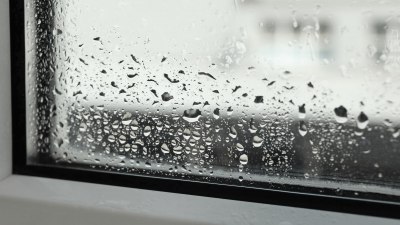The Psychology of Buying Shorts on the First Warm Day (and Regretting It Later)
Explore the psychology behind impulsive summer purchases and the regret that often follows.

When that first warm day of spring arrives after a long, cold winter, people tend to feel an overwhelming rush of excitement and anticipation. It is the moment when heavier coats are tucked away, and lighter and more breathable clothing makes its grand return. For many, this early warmth triggers a surge of enthusiasm to embrace the outdoor lifestyle, which includes purchasing items like shorts.
This phenomenon is not merely about the weather but encompasses a deeper psychological motivation at play. The decision to buy shorts on the first warm day can be attributed to a series of factors involving emotional responses, societal expectations, and cognitive biases.
The Emotional Response to Warm Weather
Human behavior is significantly influenced by emotions, and warm weather tends to evoke positive feelings. Researchers have found that higher temperatures correlate with enhanced mood and increased feelings of happiness and well-being. As the sun shines brightly and the outdoor environment beckons, consumers feel a strong inclination to celebrate the arrival of summer. This joy often manifests in retail therapy, where buying new items — particularly clothing that signifies warmer weather — becomes a priority.
Furthermore, warmth is associated with notions of freedom and leisure, fueling cravings for a more relaxed lifestyle where one can engage in outdoor activities, social gatherings, or spontaneous adventures. Shorts, which symbolize comfort and a carefree attitude, become incredibly desirable on these initial warm days. The desire to embody this lifestyle can compel individuals to make impulse purchases they might not typically consider.
The Influence of Social Media and Advertising
In today's digitally connected world, social media plays an influential role in shaping consumer behavior. As spring approaches, social media platforms are flooded with images depicting individuals in shorts at beaches, parks, and picnics. This visual imagery can create a skewed perception of reality, compelling consumers to feel the need to conform to these displayed ideals. Many buy shorts impulsively as a way to participate, even if it might not align with their practical needs or current wardrobe.
Advertisements also support this trend. Retailers often launch aggressive marketing strategies that highlight seasonal items. The first warm day becomes an opportunity for brands to promote summer collections and discounts. The combination of emotional marketing and social pressures creates a perfect storm for compulsive buying behavior.
Cognitive Biases and Decision-Making
Cognitive biases play a substantial role in how consumers navigate purchasing decisions. One pertinent bias is the “availability heuristic,” which refers to how people assess the likelihood of an event based on how easily examples come to mind. Upon experiencing warm weather, memories of past enjoyable summer experiences become prominent, leading to the impulse to recreate those moments by purchasing shorts.
Additionally, the “anchoring effect” may contribute to buyers’ decisions. Upon experiencing a shift in the weather, the mind may anchor onto the first flip-flop or tank top sighted, and short pants become these visible anchor points that drive immediate purchases. Impulsivity surfaces as consumers feel the urgency to act before the opportunity slips away, leading to decisions fueled by emotions rather than rational evaluation.
The Regret Cycle
Regret often follows the thrill of an impulsive purchase. After buying a pair of shorts, a cycle of doubt may set in. Consumers might begin to question whether they truly need the new shorts or if the purchase fits in with their existing wardrobe. Concerns over the fit, style, price, and overall utility can lead to cognitive dissonance wherein buyers experience discomfort from holding conflicting thoughts.
Moreover, warm weather may not last. Consumers might find themselves regretting their spontaneous shorts purchase if temperatures drop shortly after or if they realize that they do not wear the shorts as frequently as anticipated. This regret can lead to feelings of financial waste or cognitive dissonance, further complicating the emotions surrounding the purchase.
Strategies for Mindful Purchases
As it pertains to buying shorts or any other seasonal item, there are tools for consumers that aid in making more mindful and intentional purchases. First, developing an understanding of one’s wardrobe needs can help consumers avoid frivolous buying choices. Maintaining a seasonal checklist could serve as an effective inventory method for gauging what clothing items are genuinely needed versus what is a product of impulse.
Practicing delayed gratification can also be a powerful strategy. Instead of purchasing shorts immediately on that first warm day, consider waiting a day or two. Reflecting on whether the item fills a genuine void in your closet can save both money and regret in the long run.
The Bigger Picture
The psychology of buying, especially during impulsive moments tied to seasonal changes, highlights consumers' complex interplay between emotions, social influences, and cognitive processes. Recognizing the psychological impulses at play is the first step toward more thoughtful shopping habits. Making informed decisions about purchases allows individuals to enjoy the benefits of spontaneity while minimizing the risk of regret and waste.
Shifting perceptions of summer shopping can lead to a more sustainable approach, reducing the lure of fast fashion's fleeting gratification in favor of carefully curated wardrobes filled with items that genuinely resonate with individual style and needs. While the allure of the first warm day may be hard to ignore, consumers can empower themselves through self-awareness and thoughtful consideration, transforming their shopping experiences into more positive and satisfying engagements.
Ultimately, when it comes to buying shorts on that exciting first warm day, understanding the underlying psychological motivations will not only enhance consumers' shopping experience but also enrich their relationship with their wardrobe in the warmer months to come.











